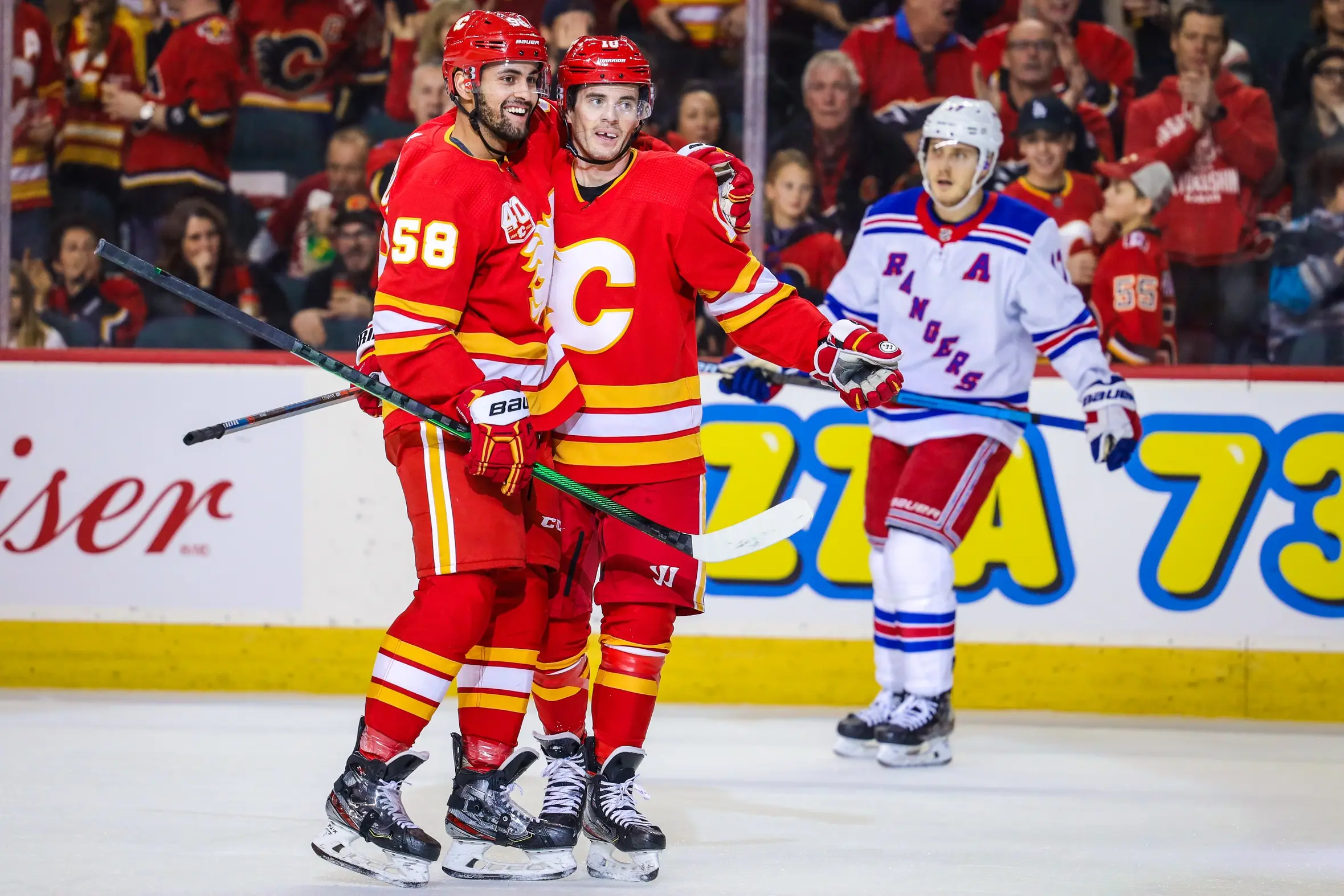Where does Oliver Kylington fit for the Flames?

By Ryan Pike
3 years agoThe Calgary Flames have made some moves this off-season, but for the most part their off-season tweaks and signings appear to be done. They may have left one of the more intriguing signings for last, as restricted free agent Oliver Kylington is the bit of unfinished business.
But after five years playing pro hockey within the Flames organization, where does Kylington fit in for 2020-21?
The Flames’ top defensive pairing seems set: it’s former Norris Trophy winner Mark Giordano and young Swede Rasmus Andersson. The second pairing seems to be Noah Hanifin with former Canucks rearguard Chris Tanev. The third pairing will feature Juuso Valimaki and… somebody.
Can Kylington be that somebody, or will it be recently-signed Alex Petrovic? Or somebody else entirely?
Kylington is 23 and Swedish. He was the Flames’ second round pick, 61st overall, in the 2015 NHL Draft. He was ranked 28th by FC Hockey and widely considered a likely first round pick, but he slid on draft weekend for a handful of reasons – primarily because he bounced around a lot, playing in the SHL, Allsvenskan, Champions League, SuperElit, the World Under-18s and the Hlinkas. He bounced around, didn’t have a ton of consistent partners, linemates or coaches as a result, and so he didn’t have a lot of consistency as a result in his game. Hence, the slide.
The Flames traded up to grab him with the last pick of the second round, signed him to an entry-level deal and convinced him to come play pro hockey for them. He had already played two seasons primarily in pro hockey, so it seemed like a logical next step and he came over. Due to a CBA quirk – the “slide rule” – his ELC lasted five seasons rather than the usual three.
He’s played 87 NHL games and 190 AHL games to this point. The goal was to improve the defensive zone skills of Kylington, whose hallmark was always great mobility, smart offensive plays but occasional gaffes away from the puck. He’s a combined -26 in the AHL, but the feedback from pro scouts is he’s not a liability. If you’ve seen him in the NHL over the past two seasons, playing primarily on the third pairing with some combination of Andersson, Dalton Prout or Michael Stone.
Over the past two seasons, nine defensemen have played 20 or more regular season games for the Flames: Giordano, Travis Hamonic, Hanifin, TJ Brodie, Andersson, Prout, Stone, Valimaki and Kylington. Compared to this group, Kylington has the worst (or next-to-worst) offensive shot rates – things like Corsi For, Scoring Chances For and High Danger Chances For – but he’s part of a bottom group in defensive metrics with Hanifin and Valimaki. This despite starting the majority of his shifts in the offensive zone – albeit often with Prout or Stone alongside him, and playing with the fourth line.
This puts Kylington in a weird spot, though. Through five pro seasons in North America he’s established himself as good enough to be in the NHL, but seemingly not good enough yet to be a good NHLer – he’s been bumped to the press box two trade deadlines in a row as Brad Treliving acquired Oscar Fantenberg in 2019 and Erik Gustafsson and Derek Forbort in 2020. Is Kylington any good? Well, yeah, but it’s hard to say whether he’s a reliable NHL option because he played so often with bubble NHLers and it’s hard to tease out his on-ice impacts compared to his partners’.
Kylington is waiver eligible in 2020-21, meaning he’d need to clear waivers to be sent to the minors. He’s played the left and right side of the ice before, though he’s been almost exclusively a left side defender in North America. He could play on Valimaki’s right side, and a pair of offensive-minded blueliners from Nordic countries could be fun to watch. Would they be reliable defensively? That’s a good question, and probably something the Flames would need to strongly consider given the importance of Valimaki’s development to the franchise’s future on the back end.
The Flames don’t have a ton of defensive depth heading into 2020-21 and don’t really have the cap space to go acquire any more. They probably have to make due with what they have, and they don’t have any perfect options. Valimaki might be the best defenseman Kylington has been paired with as a North American pro and it could work well. But trying out Kylington out on his off-side alongside somebody who hasn’t played much hockey in the past two years may be a challenge. But there’s no guarantee that putting Petrovic there instead of Kylington would be any better, either. Considering they’ve spent five seasons developing him and there’s an expansion draft looming, figuring out what Kylington can do in the Flames lineup once and for all may be the smart move.
And all of this leads to one last question: given Kylington’s unclear impacts, unclear role and unclear future, what should his next contract look like? In the absence of strong evidence to the contrary, it’ll probably be a one year, one-way deal worth slightly more than the league minimum of $700,000 – it makes him easy to keep on the Flames’ NHL roster, but also a tantalizing player to other teams if he’s ever placed on the waiver wire.
Recent articles from Ryan Pike





